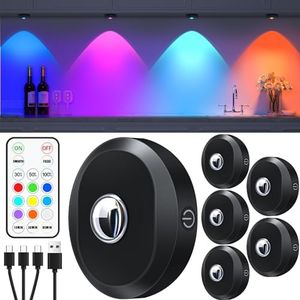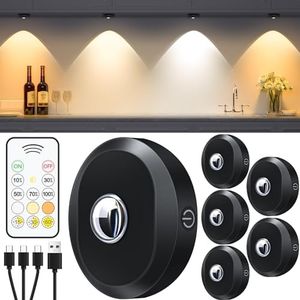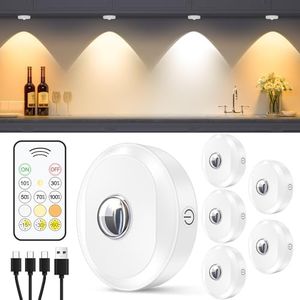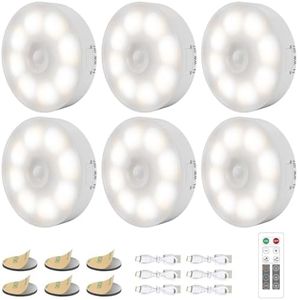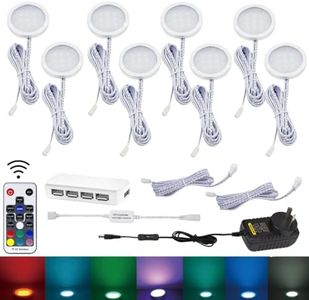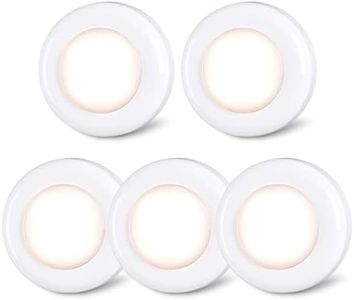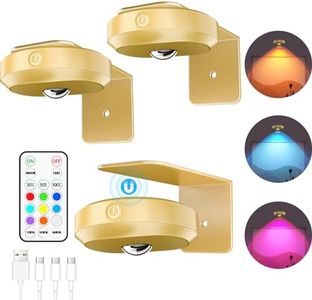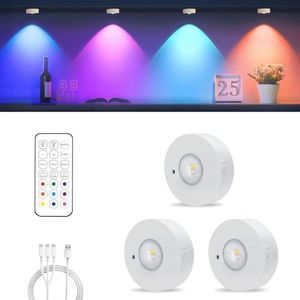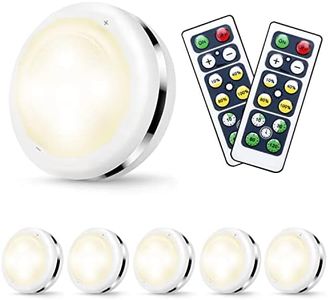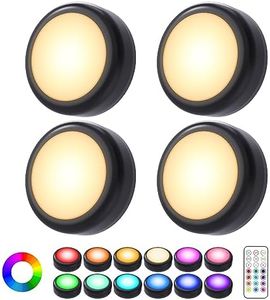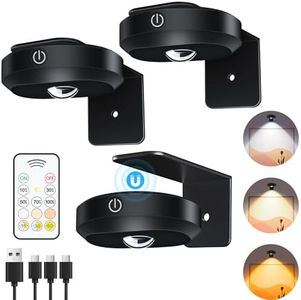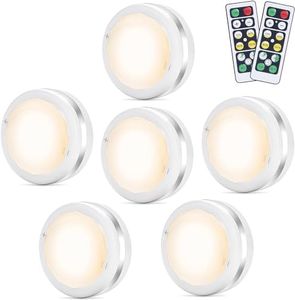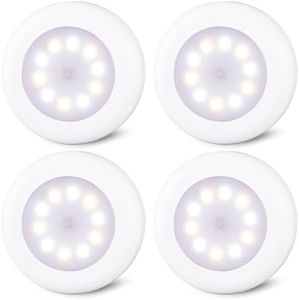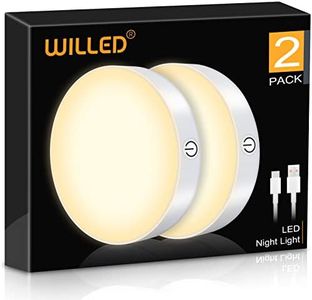We Use CookiesWe use cookies to enhance the security, performance,
functionality and for analytical and promotional activities. By continuing to browse this site you
are agreeing to our privacy policy
10 Best Puck Lights
From leading brands and best sellers available on the web.Buying Guide for the Best Puck Lights
Puck lights are small, round light fixtures that are often used in areas where you need targeted lighting, like under cabinets, inside closets, or as accent lighting. When choosing puck lights, it's important to think about where and how you plan to use them, how easy they are to install, the light quality you want, and whether you need features such as dimming or remote control. Understanding the most important specs can help you make a smart choice that fits your needs.Power SourceThe power source refers to how the puck lights get their electricity; they can be battery-powered or plug-in (wired). Battery-powered puck lights are easy to install and don’t require any wiring, making them ideal if you want flexibility and don’t want to deal with electrical work. However, they may require more maintenance since you will need to replace or recharge the batteries. Plug-in or hardwired options provide a more permanent lighting solution and ensure constant brightness without worrying about battery life, but installation may be more involved. Your choice depends on whether you need the lights to be portable and easy to move or if you want a permanent, always-on setup.
Installation TypeInstallation type tells you how the lights are attached to surfaces. Some puck lights come with adhesive backing for easy stick-on placement, while others require screwing them in or even wiring them into your home’s electrical system. Adhesive options are quick and renter-friendly but may not stay as firmly in place over time, especially in warmer areas. Screw-in or hardwired lights are more secure and stable but may need tools and a bit more effort to set up. Consider how permanent you want the lights to be and how handy you are with tools when deciding here.
Light Color and TemperatureThis spec deals with the color of the light that the puck produces, usually measured in Kelvins (K). Warmer (lower-K) lights give off a cozy, yellowish glow, usually between 2700K and 3000K, ideal for bedrooms or ambient settings. Cooler (higher-K) lights are brighter and whiter, in the 4000K to 6000K range, which work well in kitchens or workspaces. For accent or display lighting, a warmer tone often makes things look more inviting, while cooler tones are best where you need alertness or more focused light.
Brightness (Lumens)Brightness is measured in lumens and tells you how much light the puck lamp will produce. Lower lumens (around 20-50 per puck) are best for subtle accent lighting or use in small, enclosed spaces. Medium brightness (50-100 lumens) is good for under-cabinet kitchen lighting or closets. Higher lumens (100+) are better if you need more direct task lighting in larger areas. Match the brightness to the size and purpose of your space—less for ambiance, more for function.
Control OptionsControl options describe how you turn the puck lights on and off or adjust their settings. Some lights use basic manual switches, while others come with remote controls or even offer app/voice control for convenience and smart home integration. Manual switches are simple but may be less convenient for lights in hard-to-reach places. Remotes, apps, or smart controls offer more flexibility and comfort, especially if you want to adjust multiple lights at once. Think about where the lights will be placed and how often you want to adjust them to choose the best control option for you.
Dimming CapabilityDimming capability means you can adjust how bright the light is. Some puck lights offer built-in dimming through touch, remote, or app controls. If you want to use the lights both for tasks and for creating mood or accent lighting, dimming is a very useful feature. If you plan to use the lighting just for one specific purpose, such as bright task lighting, you might not need this option.
Build Material and DesignPuck lights can be made from plastic, metal, or a blend of materials, and they come in various looks and finishes. Plastic is usually affordable and lightweight but might not look as high-end or be as durable. Metal options add sturdiness and a more elegant feel, suitable for visible or upscale settings. The design should match both the spot you want to install them and your style preference. If the lights will be hidden (like inside a cabinet), looks may matter less, but durability and size could be more important.
